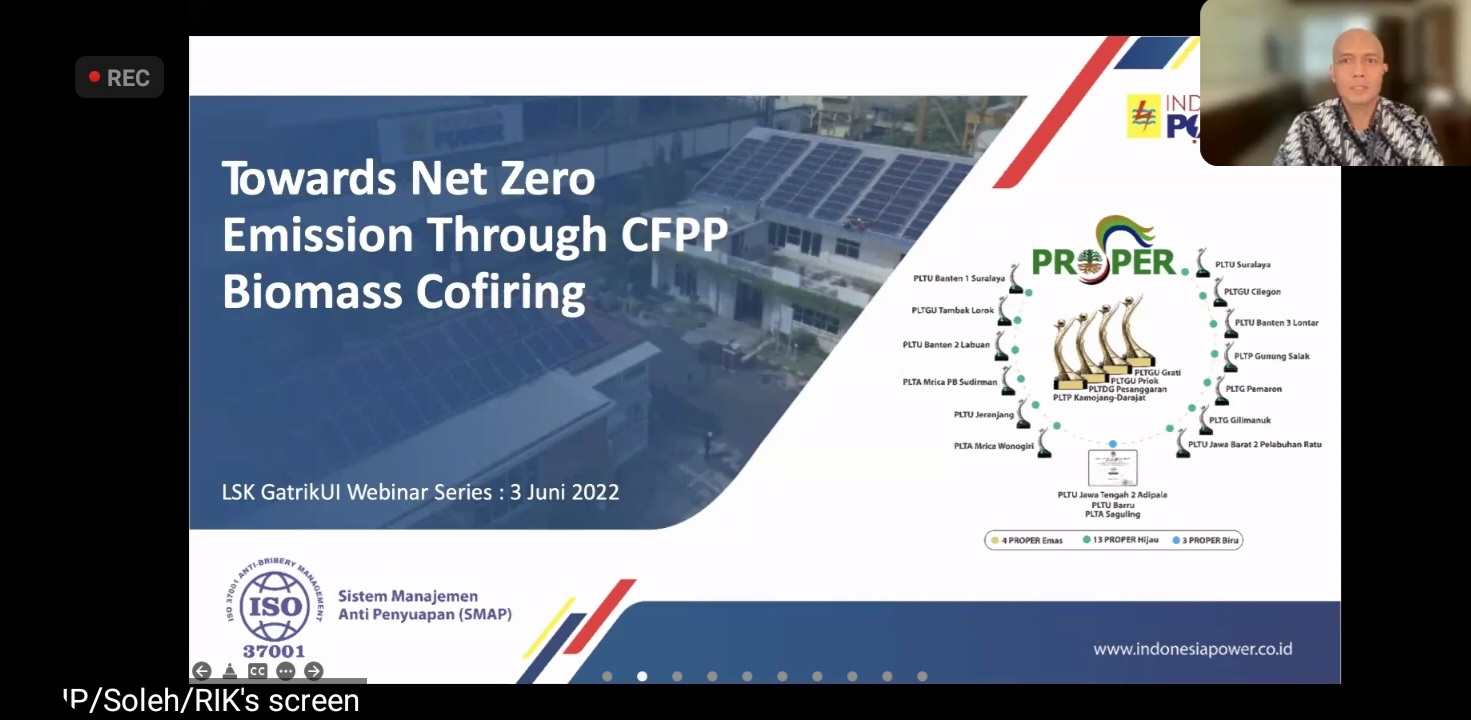Last Friday (3/6), Head of FTUI held a webinar with the theme “Biomass Co-firing at PLTU”. Kagatrik FTUI invited speaker Mochamad Soleh, ST, MT, QRMP, IPM, Head of Research, Innovation & Knowledge Management, PT Indonesia Power.
Co-firing is the addition of biomass as a partial substitute or coal mixture in a Steam Power Plant (PLTU). “There are three types of co-firing, namely direct co-firing, indirect co-firing, and parallel co-firing. Direct co-firing is the most common and cost-effective method. Biomass is directly included in the combustion at the PLTU. Indirect co-firing is biomass that has been burned and turned into gas. Then this gas is used. Lastly, parallel co-firing is heating separately between coal heating and biomass heating,” explained Mochamad Soleh.
The Co-Firing program at coal-fired power plants with biomass is one of the PLN “Green Booster” programs to support the national NRE energy mix target. This is an effort to fulfill the New Renewable Energy (EBT) mix of 23% by 2025 in accordance with the government’s target.
“PJB has conducted studies related to co-firing since 2018 and has tested co-firing on 16 PLTUs in Java and outside Java with a co-firing percentage of 1-20%, making PJB a leader in co-firing innovation in Indonesia,” said Sholeh .
The implementation of Co-firing will have an impact on reducing carbon emissions per year by around 11 million tons of CO2 and greenhouse gases. Not only that, co-firing is also part of the people’s electricity ecosystem. Communities can be involved and participate, while increasing local economic growth.
Several types of biomass that can be used in cofiring, namely wood pellets, palm shells, sawdust, brown fiber, woodchops from various types of wood, and rice husks. This type of biomass can be obtained from people in various cities in Indonesia.
***
Public Communication Bureau
Faculty of Engineering, Universitas Indonesia

